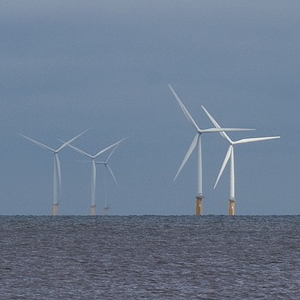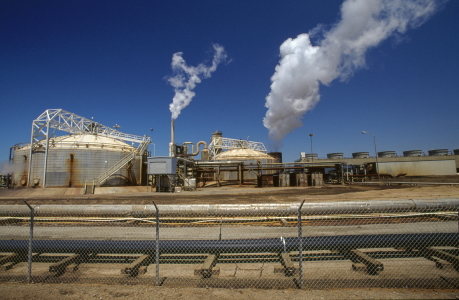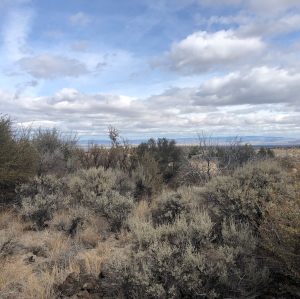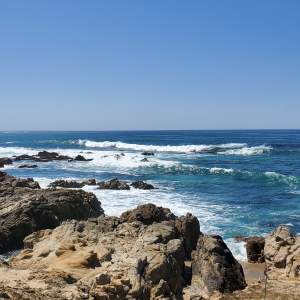The Commission provides leadership and expertise on renewable and geothermal energy development on state-owned lands. Our focus is on wind, geothermal, solar, and wave energy. Staff negotiates leases for renewable energy projects and contributes to interagency working groups that develop strategies to achieve science-based renewable energy development.
Additional Information
- California Intergovernmental Renewable Energy Task Force
- Memorandum of Understanding with Renewable Energy Action Team
- Memorandum of Intent with the Bureau of Land Management
- Resolution supporting the environmentally responsible development of school lands under the Commission’s jurisdiction for renewable energy-related projects

Offshore Wind Energy Development
The Commission is committed to innovative solutions for climate change and the responsible development of renewable energy. A study by the National Renewable Energy Laboratory indicates that areas off the west coast have strong potential for generating large amounts of energy and can help California meet its renewable energy goals. Given the depth of the ocean along the California Coast, floating offshore wind is the most suitable technology to harness this resource. The Commission supports environmentally responsible offshore renewable energy development and is an integral part of making offshore renewable energy a reality in California.
The Commission issues leases for offshore renewable energy projects in state waters. The process of evaluating lease applications requires using the best available science and California Environmental Quality Act review. The Applications for Offshore Wind Energy Development in State Waters webpage provides information about offshore renewable energy, our jurisdiction, vital environmental information, the lease application review process, and existing applications.

Geothermal Energy
Geothermal energy has provided California with clean, reliable, and affordable electricity for over 50 years. California contains the largest amount of geothermal generating capacity in the nation, with 25 known geothermal resource areas. The Commission issued its first geothermal prospecting permit near the Salton Sea in Imperial County—nearly 50 years ago. And production and use of geothermal resources from state-owned lands the Commission manages has been occurring for nearly four decades at the Geysers Geothermal Field, the world’s most developed geothermal resource area.
The Commission owns a 100 percent mineral interest in 7,247 acres under lease at the Geysers, and a 1/16th mineral interest in another 895 acres. Geysers Power Company LLC and CPN Wild Horse Geothermal LLC, both subsidiaries of Calpine Corporation, hold these leases. The Commission’s geothermal leases and permits generate revenue from royalties on steam production and electricity generation at the Geysers Geothermal Field in Sonoma and Lake Counties. Geothermal royalties totaled $5,927,020 in fiscal year 2021-22.

Solar Energy
The Commission has two solar energy leases, both of which are in Kern County. The Commission owns over 340,000 acres of land in the desert that have abundant potential for renewable energy development. These lands, known as school lands, are generally not contiguous and exist in a checkerboard pattern, making renewable energy development challenging. Where possible, the Commission is working to consolidate the lands into sites that have the potential for renewable energy development.
AB 982 (Skinner), Chapter 485, Statutes of 2011, requires the Commission to enter into a Memorandum of Agreement with the Department of the Interior (via the Bureau of Land Management) to facilitate land exchanges that consolidate parcels into contiguous holdings for large renewable energy development. In 2015, the Commission and the Bureau of Land Management signed a Memorandum of Intent to exchange school lands in federal wilderness and other conservation areas for federal lands with the potential for renewable energy development. That exchange is stalled.
Existing law requires the Commission to proactively manage and enhance school lands to provide an economic base that supports retired teachers and requires the Commission to take all action necessary to fully develop school lands, indemnity interests, and attendant mineral interests into a permanent and productive resource base. In 2008, the Commission adopted a Resolution supporting the environmentally responsible development of school lands for renewable energy projects.
Solar projects, as part of the state’s overall energy portfolio, contribute to achieving the state’s ambitious greenhouse gas emission reduction target of 40 percent below 1990 levels by 2030 and renewable energy procurement target of 60 percent by 2030 and 100 percent by 2045.
The Commission expects more interest in the leasing of school lands for renewable energy projects in the coming years.
Current Leases
| Lessee | Location | Acres | No. of Leases | Issue Date & Term | Staff Report |
|---|---|---|---|---|---|
|
BigBeau, Solar |
Section 34, T10N, R14W, SBM, West of Mojave, Kern County |
120.17± |
08/20/2020 |
40 years |
|
|
Windhub Solar B, LLC |
Section 28, T11N, R13W, SBM, west of Mojave, Kern County |
|
02/28/2023 |
40 years |

Wave Energy
The Commission is involved in the Intergovernmental Renewable Energy Task Force that is exploring renewable wind and wave energy development opportunities in federal offshore waters along California’s Coastline. The Task Force allows for coordination between federal, state, tribal, and stakeholder interests regarding offshore renewable energy projects. Commission staff is also part of the Marine Renewable Energy Working Group and authored an informational report about marine renewable energy, environmental impacts, and advancing California’s goals.
The planning, permitting, and development of marine renewable energy are challenging and require careful balancing of clean energy goals with the highest levels of environmental protection. Marine renewable energy devices have been deployed elsewhere in the world, but not in California waters. There is increasing interest in offshore wind, wave, and tidal energy development in California to achieve a clean energy economy. The Commission facilitates coordination and provides leadership in science and in the regulatory pathways that are essential to developing marine renewable energy technologies.

